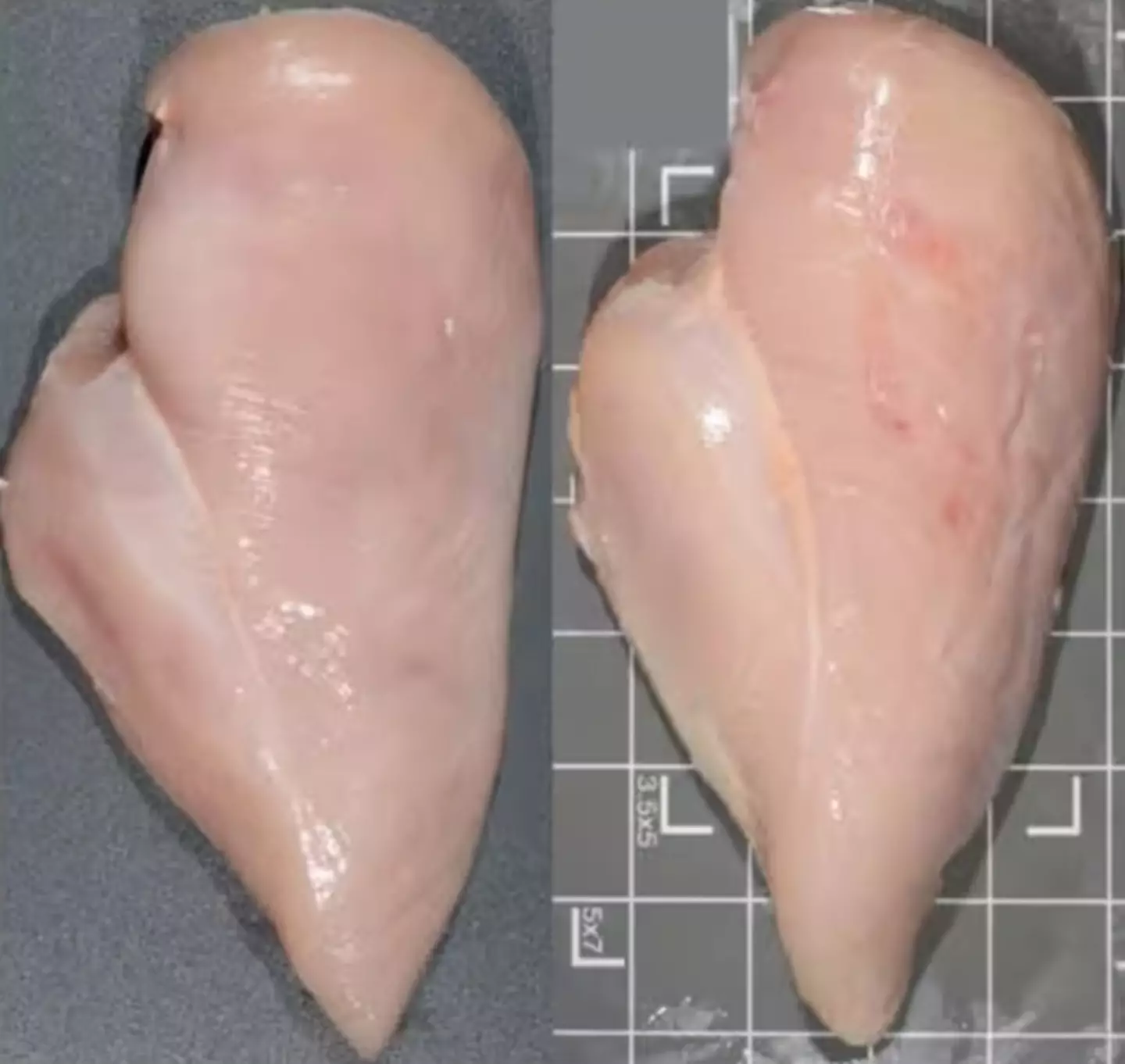
With prices having shot up across just about everything post-Covid, recent news of UK trade deals with India and the US might point to slightly cheaper goods on the horizon.
It’s too early to tell whether we’ll notice much difference as consumers – at least, for those of us who aren’t proper economists – but it’s welcome news amidst global flailing over inflationary pressures and the Trump administration’s tariff policies.
One thing that’s cited time and again when it comes to a deal with US, however, is the fact we have more exacting food standards in the UK.

Advert
‘Chlorinated chicken’ is the poster child of the issue, with people vehemently rejecting the idea that chlorine-treated US chicken could end up on British shelves.
It doesn’t seem as though that’s going to happen any time soon, thankfully, and a recent phenomenon common in the US may make you even more glad to know their birds aren’t making the trip across the Atlantic.
‘Woody chicken’ sounds as horrible as it is: chicken breast meat that’s unusually hard, stringy, and fibrous. Other odd phenomena include ‘spaghetti chicken’ where the muscle separates and gives the meat a spaghetti-like appearance, and ‘white striping’ where visible white streaks appear on the meat’s surface.
Today reported on these weird problems back in 2022, with Dr. Casey Owens, Professor of Poultry Science at the University of Arkansas, quoted as saying: “We’ve only been dealing with woody breasts for about eight years.”
Advert

So, what on God’s green earth is happening with this chicken?
According to Jacob R. Tuell, assistant professor at Northwest Missouri State University and member of the Institute of Food Technologists’ Muscle Foods Division, these abnormalities are relatively new.
“In recent years, there has been a substantial increase in the incidence of various disorders (myopathies) affecting chicken meat quality,” he said.
Advert
“When you refer to shoppers complaining about ‘woody’ chicken breasts that also have a stringy texture, this indicates they are likely being affected by both woody breast and spaghetti meat.”
Tuell noted that Americans are more likely to get abnormal chicken breasts than not, pointing to a recent study that found only 18.4% of 179 examined chicken breasts were ‘normal’ while 13.4% had one of the three issues noted above and 68.2% had more than one of them.
“These conditions are linked to rapid growth rates in modern broilers,” Tuell explained. “As the breast muscles rapidly grow, their blood supply is not able to keep up, leading to degeneration of the muscle tissue over time, along with excessive accumulation of fibrous connective tissue and fat.”
Apparently, the issues are most pronounced in larger chickens, along with being localised to breast tissue in many cases.
Advert
“But, I almost always buy chicken thighs and drumsticks as they tend to be more flavorful and juicier,” he said. “That has always been the case, but is especially true today as the incidence and severity of these defects increase in the breasts but largely not in the legs.”

Some supermarkets in the UK seem to be selling afflicted breasts, too, with anecdotal reports on Reddit coming through.
“I’m a butcher and I know a bit about this,” said one comment on a post about woody chicken at Asda. “Basically you can tell if a chicken breast is woody by just seeing if it has loads of white lines through it.
Advert
“It’s thought to be caused by chickens growing at an abnormal rate which is likely to happen in mass production environments such as for supermarkets like Asda etc. Your best bet is to either go to a reputable butcher or to thoroughly inspect each pack of breasts for the white lines before you buy it.”
